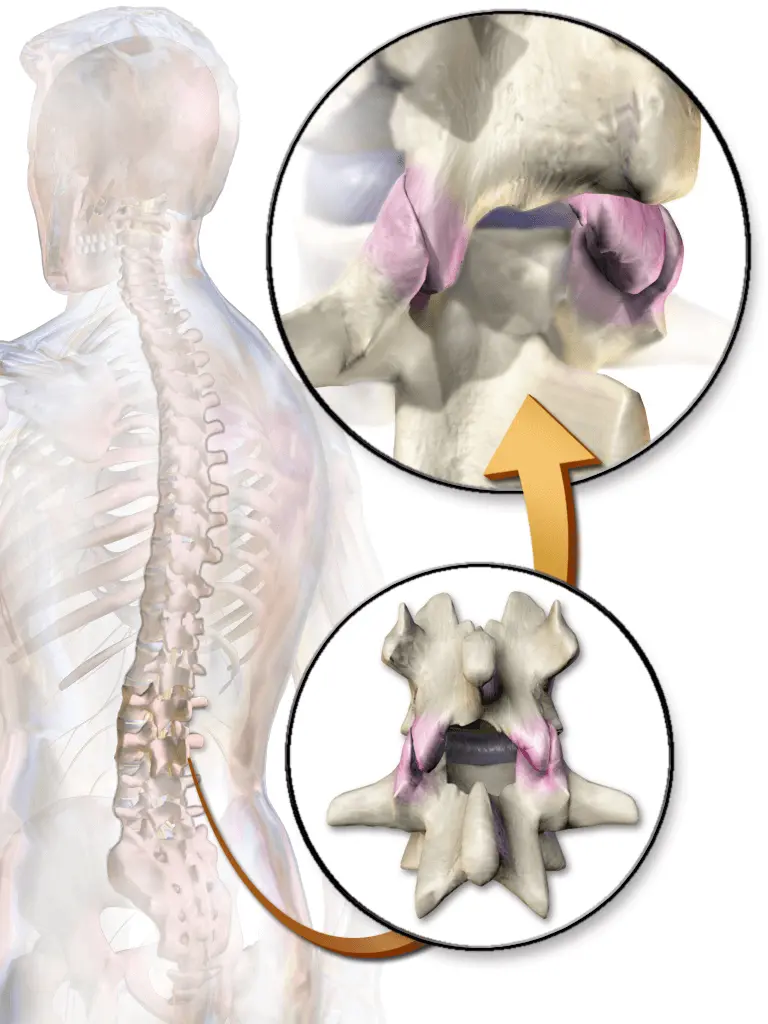What Is Facet Joint Syndrome?
Facet syndrome is directly related to joints being affected by cartilage loss. The facet joints are located between each vertebra, and are responsible for the flexibility and stability necessary for movements such as walking, running, bending and sitting. The facet joints are lined with cartilage, which help them move smoothly; when this cartilage wears down, the bones rub against each other, causing stiffness, swelling, tenderness and pain. This is usually due to every day wear and tear, but can also be a result of acute injury or trauma to the neck or back, or because of degeneration of the intervertebral discs.
Over time, facet joints become swollen, stiff, and inflamed, leading to chronic neck and back pain. While the inflammation will not last, the pain and stiffness can cause a chronic problem. The cervical (upper) and lumbar (lower) regions are most commonly affected by facet joint syndrome since these areas of the spine are considerably more flexible than the thoracic (middle) spine.
Pain from cervical facet joint syndrome can manifest as pain in the neck, shoulders, between the shoulder blades and headache. Similarly, lumbar facet joint syndrome in the lower spine can cause pain in the low back, buttocks, and back of the thighs.

Facet joints are in almost constant motion with the spine and quite commonly simply wear out or become degenerated in many patients causing considerable back pain on motion. You can trust St. Louis Pain Consultants to diagnose your pain and discuss the many treatment options available today.
Facet Joint Syndrome Symptoms
What to Expect
Proper diagnosis starts with an experienced pain management doctor. The type of pain that you may have with annular tears can be similar to the symptoms of several types of disorders. Accurately determining the correct source of your pain is critical to successful treatment.
A thorough clinical evaluation, including a complete medical history, analysis of your symptoms, and physical examination is critical to diagnose facet joint syndrome.
Every patient is different and we work with each one to establish an individualized, comprehensive plan, to achieve maximum relief. Pinpointing the source of pain and utilizing a targeted treatment plan makes our approach highly successful.
With the help of today’s technology, our pain management specialists accurately diagnose, target, and relieve the source of pain, to help you return to an active lifestyle.
Diagnostic Options
Pain is usually the driving factor that causes a patient to seek treatment for a spine condition. Before we can recommend any treatment options, we must first diagnose the cause of your pain.
Facet joint injections or medial branch blocks using steroid medications can help localize and reduce pain from facet joints. This can be safely performed using fluoroscopic X-ray guidance in an outpatient setting. If facet pain is temporarily improved or resolved by injections, further treatment options such as radiofrequency ablation may be suggested.
These advanced diagnostic techniques definitively pinpoint the source of pain and allow us to treat the pain. Once we diagnose a facet joint syndrome, we will create a treatment plan to reduce the symptoms of pain and discomfort. Many patients can find effective relief through conservative therapy.